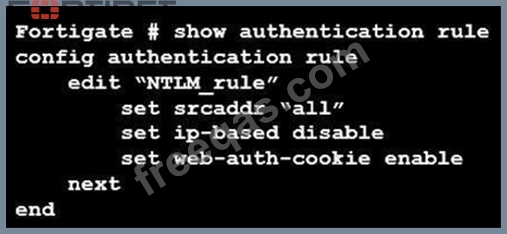Which statement is a characteristic of automation stitches?
The HTTP inspection process in web filtering follows a specific order when multiple features are enabled in the web filter profile.
What order must FortiGate use when the web filter profile has features enabled, such as safe search?
What is the limitation of using a URL list and application control on the same firewall policy, in NGFW policy-based mode?
Refer to the exhibit to view the authentication rule configuration.
In this scenario, which statement is true?
An administrator has configured a strict RPF check on FortiGate.
How does strict RPF check work?
Enter your email address to download Fortinet.FCP_FGT_AD-7.4.v2024-12-12.q52 Dumps
